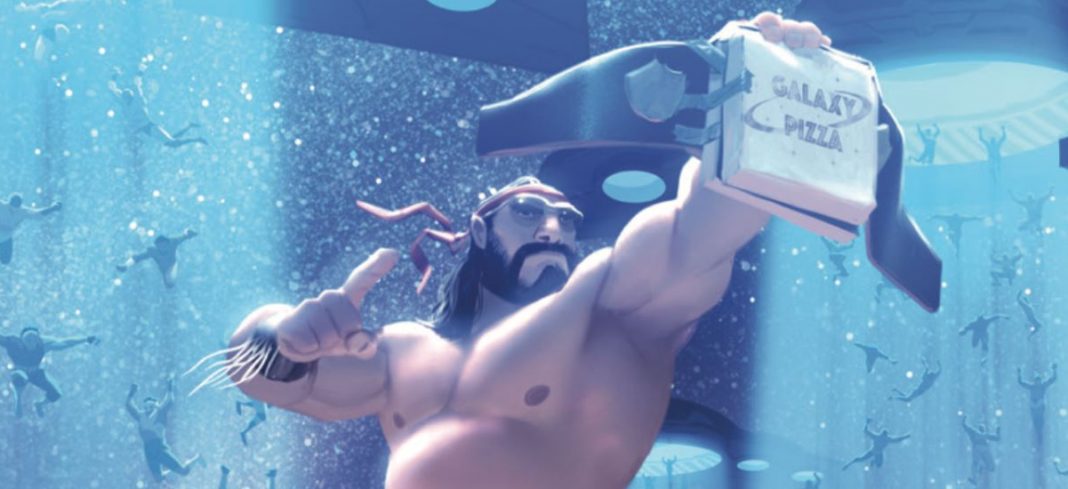The Earth has been invaded by DDT-dropping’, Pumphandle-slammin’, and sweet chin music-lovin’ wrestlers from space that want to challenge the best of the best for the title of Galactic Champion of the Universe. That, in a nutshell, is what Invasion from Planet Wrestletopia is about. Oh, and all of this happens as the world is locked inside a giant cage, making any and all fights during the invasion cage matches.
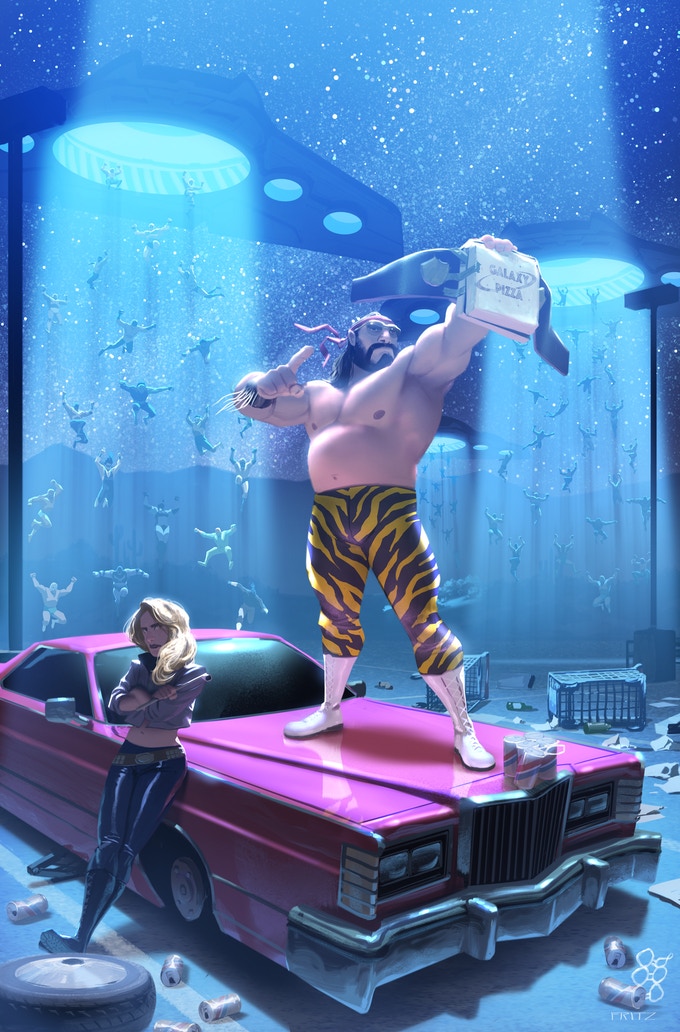
Written by Ed Kuehnel and Matt Entin (Valiant Hearts: The Great War, Mario + Rabbids: Kingdom Battle) with art by Kendall Goode and Dan Schkade, Invasion from Planet Wrestletopia (or IFPW for short) debuted as a six-issue digital comic to critical acclaim for its no-holds barred love of 1980/90s wrestling and high-octane action accompanied by a Saturday morning cartoon art style that makes it jump out of the page.
When I had the chance to review the first issue of the series, one of the things I commended the creative team for was rewarding veteran fans of wrestling with as many references and easter eggs as they could fit into every single page (down to the panel, really). The names, locations, promoters, and matches presented in the comic series are all part of a fully formed world that playfully corresponds with real wrestling lore, and it does so without neglecting new fans.
The book has a very accessible feel to it that makes readers that don’t have a considerable stockpile of wrestling knowledge on them emerge from the comic with a burning desire to know more about the history of sports entertainment. This is a rare thing to pull off and Wrestletopia achieves it effortlessly.
Invasion from Planet Wrestletopia is currently in the middle of a Kickstarter campaign to get the full series printed in a single volume that’s also filled with bonus content. The whole package isn’t just a love letter to ’80s and ’90s wrestling, it’s also a celebration and a challenge to future creators to add even more madness to wrestling.
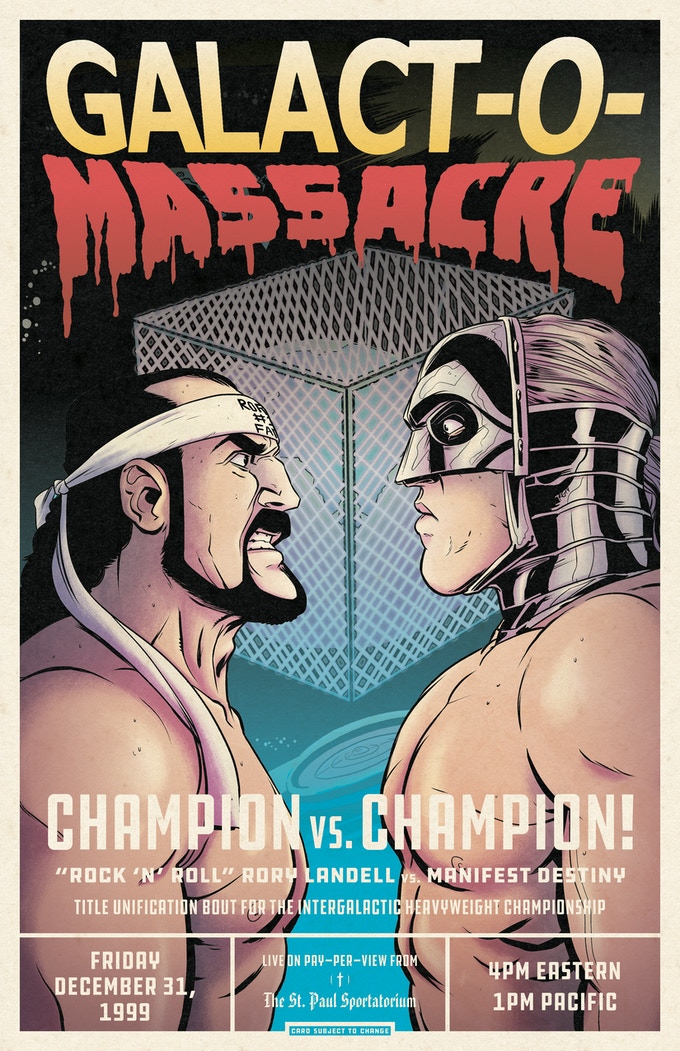
The Beat sat down with co-writer Ed Kuehnel to talk a bit of wrestling, creating a whole comic universe that could compete with the WWE or AEW, and all those glorious easter eggs that might make dedicated fans tear up while an American bald eagle and an epic guitar riff sounds off in the background.
RICARDO SERRANO: Wrestling is currently on a hot streak of media exposition due to documentary series like Dark Side of the Ring and A&E’s wrestling biographies. What do you think makes wrestling so magnetic to both new fans and veteran fans alike?
ED KUEHNEL: As for the behind-the-scenes stuff, professional wrestling is a fascinating outlaw culture, and unfortunately, the fall from grace that many wrestlers experience is too lurid to look away from. I’m as guilty as anyone, there.
As for the current product – pro wrestling came from the circus, possibly more than a hundred years ago (based on what we know.) Pro wrestlers are some of the last of the great performers to come from this tradition that has been around longer than movies or television. When you get the perfect combination of pomp, pyro, athleticism, and storytelling, there is no greater form of entertainment that exists on this planet, and I can prove it.
If you’re ever at a swanky upper midtown Manhattan cocktail party and a discussion breaks out as to which is the greatest storytelling medium in history, let the uninitiated know that it’s professional wrestling by a mile and you can prove it. Then sit back and smirk.
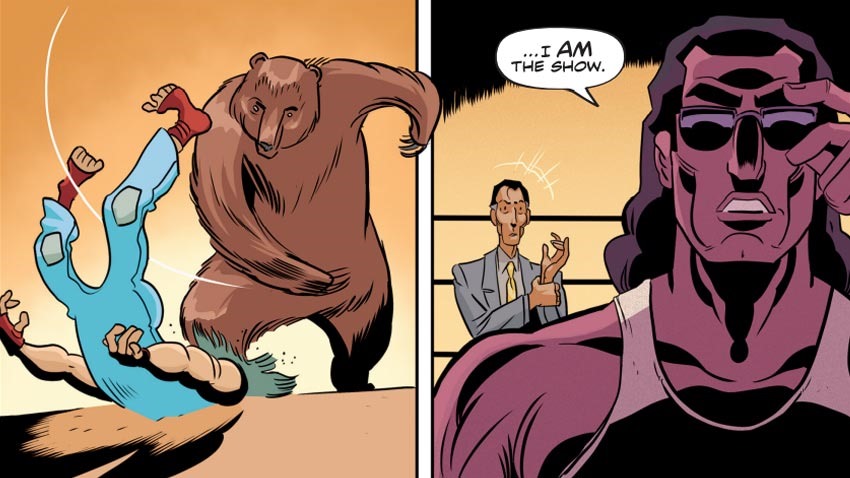
Inevitably, you’ll be asked to put up or shut up, so here’s your proof:
In the decades immediately following WWII, many a “heel” wrestler had a Japanese or German “gimmick” designed to play on racial tensions exacerbated by people’s anger over the war (wrestling in those days, had few qualms when it came to filling seats). In the early 1960s one such heel wrestler named Harold Watanabe (born in Hawaii to a Japanese father and a Hawaiian mother) wrestled under the moniker “Tojo Yamamota”.
In one famous incident, Watanabe strolled into a ring in a small arena in Boaz, Alabama and demanded the microphone. At this point, ask your listeners to imagine the reception that Watanabe, or “Tojo”, had while walking to the ring in a small town in the deep south sometime in the early 60s in front of a crowd of WWII veterans and others profoundly affected by that conflict. With all respect to Boaz, we can imagine it was… not good.
While on the microphone however, Watanabe, in a broken English affectation, surprised the crowd by delivering a teary-eyed apology on behalf of his purported homeland: “I am very, very sorry that Japan bombed Pearl Harbor.”
The stunned crowd slowly turned from despising Watanabe to feeling genuine empathy for him as a fellow victim of geopolitical forces beyond his control. As incredible a feat as this might seem, Watanabe wasn’t finished…
“I am very sorry… because I wish we had bombed BOAZ, ALABAMA INSTEAD!”
The people of Boaz, unsurprisingly, lost their collective minds.
Now, you might ask your fellow partygoers – what opera, what play, what movie (TV show, novel, etc.) has ever taken an audience from hating someone’s guts, to feeling sorry for them, to wanting to kill them with their bare hands in less than three minutes? Be kind, tell them you’ll wait, then refresh your overpriced cocktail and try not to act too smug.
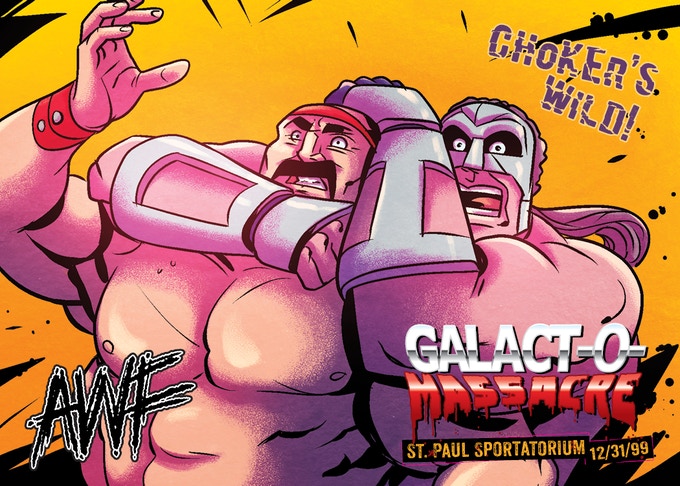
SERRANO: IFPW is bursting with easter eggs, callbacks, homages, thinly-veiled references to real wrestling personalities, and everything in between (and then in between the in-between). How did you approach this gargantuan task given the sheer amount of references spread all throughout the comic?
KUEHNEL: It helped that Matt and I come from different generations of wrestling fandom. I was a child of the late ’70s/early ’80s and grew up watching Pacific Northwest Wrestling, an NWA territory. Matt grew up on wrestling of the 90s and of the Attitude Era. We both read a ton of wrestling magazines growing up and had a lot of knowledge to work with – when you already have a strong command of a subject, research becomes a lot easier because you know where to start.
We bought a lot of old wrestling magazines off eBay and watched a ton of documentaries. We also read a lot of wrestler biographies/autobiographies (I’ve always been interested in books like Chokehold by Weldon T. Johnson and Jim Wilson.) Kendall Goode, the artist who worked on the last three issues, came with his own wrestling knowledge from having worked on quite a few WWE comics for BOOM! A lot of that stuff was second nature to us.
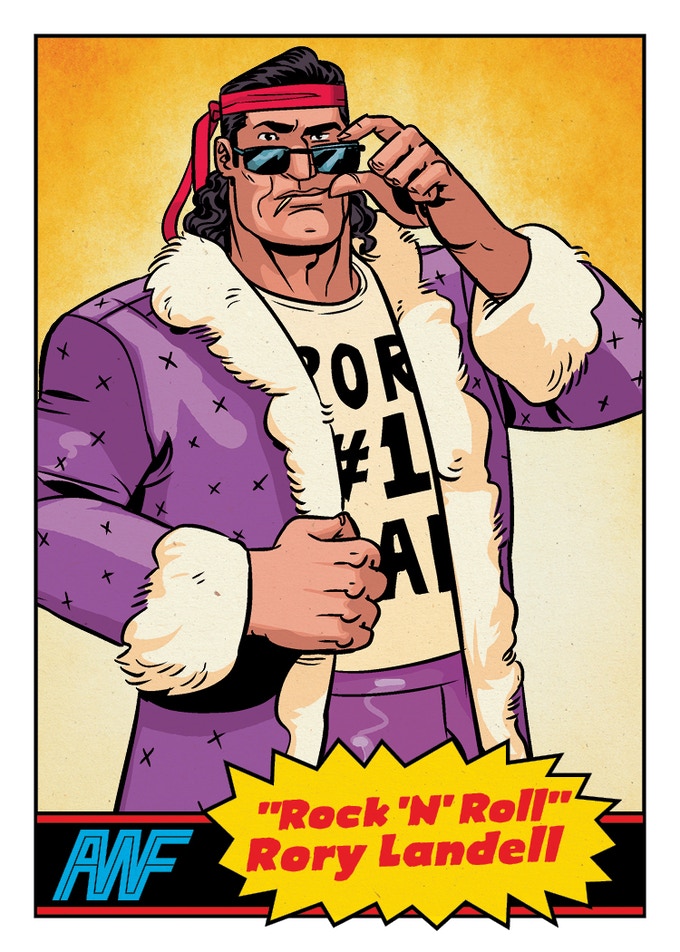
SERRANO: What led to the decision to go for a print version of the full series of IFPW?
KUEHNEL: Matt and I had worked with different artists for about four years to finish the six single issues that comprise Invasion From Planet Wrestletopia. During that time we heard from a lot of people that they would love to see a collected volume in print. Keep in mind, what feels like “a lot” can be deceiving. Was it six people? Twelve? I honestly can’t remember. When you have a dozen or so people asking you for the same thing over a relatively short period of time it can feel like a lot, so somehow this translated into us thinking we could sell four hundred preorders on Kickstarter.
SERRANO: Do comics have the same potential to create a wrestling universe as storied as that of the WWE’s or AEW’s? Could it mean more IFPW in the future, maybe a tag team-focused series?
KUEHNEL: This is just my opinion, but I think a good wrestling comic has to step outside wrestling a bit. I’d love to see a comic book that focused on a fictional wrestling territory back in the 70s – imagine HBOs Sopranos meets wrestling. Also, if the WWE is reading this, Matt and I would love to do a series entitled The Shockmaster Chronicles, where The Shockmaster is basically like Green Lantern, using the power of wrestling to right wrongs throughout the universe. I’m not so much interested in seeing wrestlers stay in character, doing in a comic book exactly what they do on TV (cutting promos and wrestling) only without the sound effects, audio, music, etc. Joe Keatinge’s Ringside is a good example – a sort of crime noir story set in a world of ambitious wrestlers.
SERRANO: Thanks for the conversation, Ed!
KUEHNEL: Thank you!
The Kickstarter campaign for Invasion From Planet Wrestletopia runs until Thursday, June 24th at 8AM Eastern.


